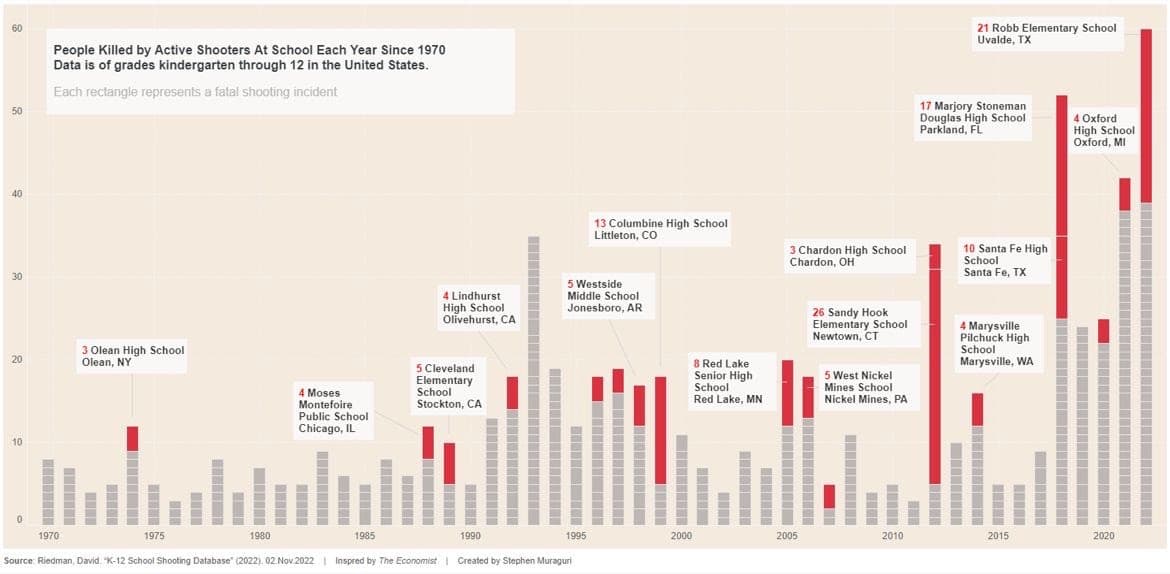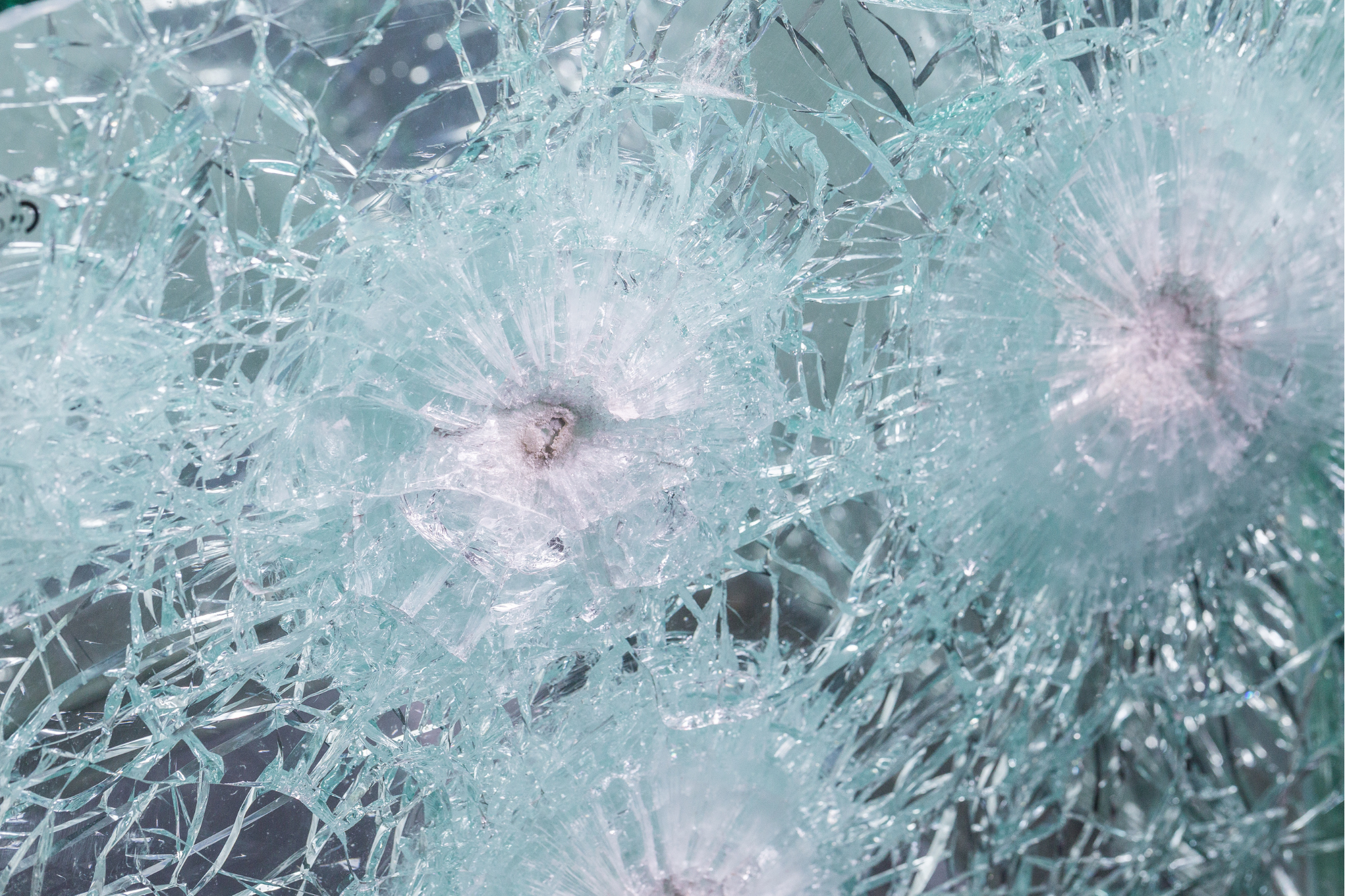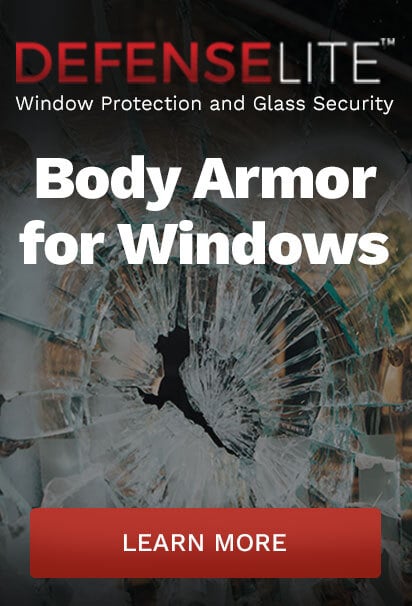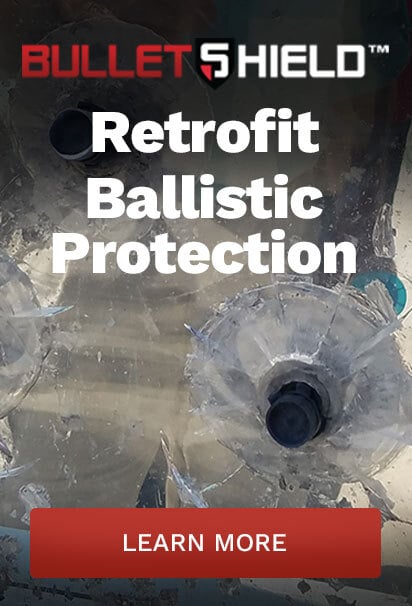School Security Update: Reinforcing Window and Door Glass

New ASTM Forced Entry Testing Methods are Designed to Enhance School Security During Active Shooter Attacks
The world is growing increasingly dangerous — smash & grab crime, riots, and even active shooter attacks are all on the rise. Banks, retail stores, and most tragically, schools, are all at risk of vicious attacks. Active shooting trends are alarming, especially in traditional ‘soft target’ locations. Keeping the bad guys outside while creating additional time for authorities to respond to developing threats is critical.
To help keep customers, employees, and students safer, these buildings need advanced security protection provided by ballistic and forced entry glazing solutions like, RiotLite, DefenseLite and BulletShield.
But how do we ensure our security glazing solutions are able to withstand the types of ballistic threats that these buildings face? How best to compare available solutions in the marketplace? Fortunately for building security professionals and design consultants, today, rigorous product testing provides the data needed to make fact based decisions on product choice.
Adherence to advancements in ballistic and forced entry testing requirements, such as the new ASTM F3561 standard recently assembled by the National Glass Association, is a big step forward for specifiers looking to utilize the latest in glazing security solutions for schools and other buildings facing active shooter threats.
In this article you’ll learn:
- How Ballistic Forced Entry Glazing Protects Fenestration Systems Against Active Shooter Attacks
- The Role of the NGA in Industry Standards & Testing
- What’s in the New ASTM F3561 Testing Standards?
How Ballistic Forced Entry Glazing Protects Fenestration Systems Against Active Shooter Attacks
Security window glazing acts as an additional layer of forced entry prevention from violent attack, including active shooter episodes. Polycarbonate window shields — such as DefenseLite and BulletShield — absorb and deflect high-impact assaults, keeping the primary window glass unbreachable and denying potential intruders entry into a school or building through the glazed openings. Upon attack, these access denial retrofit window systems flex and bend, but do not break, helping keep the bad guys on the exterior of the building giving first responders critical time to react to unfolding events.
With episodes of smash-and-grab crime, forced entry, and political vandalism rising, ballistic and forced entry window glazing is essential for any business, organization, or school building needing to safeguard against active shooter threats, including:
- Schools & Universities
- Commercial Office Buildings
- Police Stations & Government Facilities
- Retail Storefronts
To ensure ballistic and forced entry window glazing solutions are able to protect fenestration systems against active shooters, however, they must be scrutinized, tested, and held to the highest industry standards.
The Role of the NGA in Industry Standards & Testing
The National Glass Association (NGA) is the largest trade association serving the glass industry — encompassing 1,700 member companies that include primary glass manufacturers, glass building product supplies, full-services glass companies, and glazing contractors like Impact Security, LLC.
Working to push the industry forward, the NGA develops new testing standards and technical resources for the glass industry, often in response to expanding parts of the industry and recently developed needs. One area of recent importance is protection against school shooters.
The NGA’s School Security Task Group
Tragically, school shootings have increased in both frequency and severity in recent years. NGA recognized a need for a relevant, accurate international standard to protect entrance to facilities by intruders through locked fenestration in response to this increase.
Spurred by these conditions, the NGA assembled a School Security Task Group charged with reviewing the current referenceable standards for school security testing. During its review, the NGA School Security Task Group identified several gaps in the testing standards including repeatable, mode-driven, and consensus-based fenestration test methods. These gaps included tests for system-weakening and forced entry assaults.
With the testing standard review revealing the need for modification, in November of 2021, the NGA School Security Task Group set out to “create a consensus-based standard test method and specification for Active Shooter scenarios for schools.” According to its website, the new standard testing method would “promote the use of glazing for visual awareness and entry deterrent in a meaningful way to address the risk, threats and vulnerabilities of educational facilities.”
Following an eight-month, multi-step review process, the NGA School Security Task Group was successful in developing a comprehensive, yet easily administered consensus-based standard.
The NGA’s New Consensus-Based Testing Standards
The new consensus-based standard — entitled “Standard Test Method for Forced-Entry-Resistance of Fenestration Systems After Simulated Active Shooter Attack” — was officially announced at the NGA Glass Conference in Northbrook, Illinois in July 2022.
Created through the American Society for Testing and Materials (ASTM) F12 Security Committee, the NGA’s new standard underwent a thorough review by ASTM International, and was approved for publication on August 1, 2022.
ASTM F3561 now serves as the benchmark testing standard for forced entry resistant doors and windows.
 What’s in the New ASTM F3561 Testing Standards?
What’s in the New ASTM F3561 Testing Standards?
The test was specifically designed to simulate scenarios where an active shooter weakens vulnerable building fenestration systems — which includes glass doors and windows — by repeatedly firing ballistic rounds onto the exterior surface of the fenestration, followed by a series of mechanically driven impacts that simulate forced entry.
Uses
The new ASTM F3561 mechanically driven testing method is intended primarily for manufacturers to test and rate their glazing products to ensure they meet the necessary requirements for protecting against forced entry after enduring an active shooter ballistic assault.
Ratings & Criteria
The fenestration products are rated on eight levels of forced-entry resistance, and the test provides a range of performance options with easy-to-assess pass/fail criteria.
Test Procedure
The ASTM F3561 test procedure includes the following test criteria:
- 10 ballistic rounds shot from a single weapon and ammunition type are fired into the glazing products in a tight burst
- The weapon that must be used in the testing is the AR-15 with 5.56x45mm ammunition, as it is the most commonly used weapon in school shooting attacks
- Following the initial weakening from the ballistic assault, the glazing is then struck with a center-mass, 100-pound mechanical impactor at eight different drop heights
Increase Ballistic Forced Entry Protection During Active Shooter Attacks with DefenseLite and BulletShield
With their ability to deter and slow forced entry during active shooter events, security glazing products — such as DefenseLite and BulletShield — are imperative to creating safer schools, police stations, storefronts, and office buildings.
Impact Security, LLC adheres to the industry standards for forced entry and ballistic attacks, rigorously testing our retrofit security glazing products to ensure they’re ready to perform when it matters the most. Our products are installed in buildings across the United States, improving their resistance against ballistic forced entry threats.
To protect your storefront, school, office building, or government facility from active shooter attacks, contact us today. For additional testing details or to schedule an onsite demonstration or live-fire event, call on the experienced team at Impact Security.


 What’s in the New ASTM F3561 Testing Standards?
What’s in the New ASTM F3561 Testing Standards?
